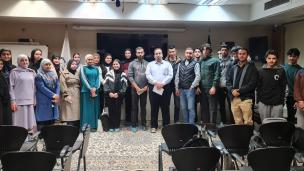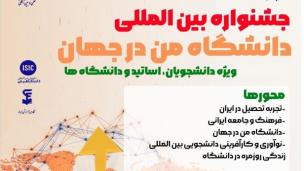|
As a big city in the heart of Iran, Isfahan welcomes you with great historical, cultural and scientific centers. Isfahan, the cradle of culture and art, contains the most important immortal works of Islamic architecture and has many beautiful monuments. Also, it is the adopted sister of many of the most famous cities in the world. In short, Isfahan is a world for itself.
Known as the City of Turquoise Domes for its beautiful mosques, Isfahan sparkles like a jewel among the cities of Iran that, despite historical fluctuations and the passage of centuries, still retains its brilliance and glory.
This charming city with kind and hospitable people annually receives a large number of foreign tourists and is one of the most well-known tourist attractions in Iran. Isfahan has been always a significant and glorious city in transportation and commodity exchanges because of its strategic axis along the Silk Road in the past and its heritage of ancient art, commerce and industry, at this time. This city is one of the valuable archaeological centers, parallel to world-class areas, and many of its artifacts have been registered in the list of monuments and it has a high universal position for art, economy, science, industry, commerce, and tourism. Since it is said "Isfahan is Nesf-e Jahan" (Half of the World) as one of the most spectacular places in Iran, one should walk throughout this city in order to have a better understanding of it and get acquainted with the culture, custom, and manner of the people of Isfahan. Visiting various historical, cultural, and recreational places along with large and modern shopping centers will be a unique experience in your life.
Isfahan with many historical heritages and natural landscapes, which made it to be the third biggest city in Iran, is also known as the blossomed rose, earthly paradise, turquoise bridge, museum city, etc. that are only some titles given to Isfahan to glorify and appreciate its grandeur. The name of Isfahan comes always along with the Zayanderud River, the largest river of the Iranian Plateau in central Iran.
Isfahan is the city of four seasons in which people can experience different climates in each month. Also, a breeze is blowing throughout Isfahan in all seasons. Especially the westerly and southwesterly winds in spring and autumn, which move along the Zayanderud River, give a special softness to the city's climate. Isfahan is a city with regular seasonal changes and a moderate climate. Of all these seasons and months, Isfahan is in its most beautiful and glorious state in May. It is a city that enjoys full sunlight, and in almost three quarters of the year is sunny.
Among the cities of Iran, Isfahan has the most number of UNESCO World Heritage Sites and therefore it is not surprising that it carries the nickname “Half of the World.” Six historical monuments in Isfahan such as Naghshe Jahan Square are included in the UNESCO list of historical heritage. To this day, the city is resplendent with magnificent mosques, rich bazaars and picturesque gardens. Local people love to walk among the huge parks and public gardens around the Zayanderud River or settle on the lawns, especially at night since the spectacular bridges like Khajoo and Si-o-se Pol are always well lit. This is when the heat dies down it takes to get to appreciate harmony. Based on writing by the French author Andre Malraux, only Florence and Beijing are comparable to Isfahan.
Isfahan is not only distinguished for its historical sites, but it also has traditional and fragrant dishes that can double the enjoyment of being in this city. When it comes to food, Isfahan is no slouch either and along with a range of delicacies that can be found throughout Iran, the city is also home to several regional delicacies. Isfahan has diverse delicious foods such as Shol-e-Qalamkar, Kalejoosh, Beryoon, and Khoresht mast that you should try them and enjoy while in the city.
Isfahan is called the city of Iranian handicrafts and traditional arts. The items they produce are appreciated by Iranians and foreigners and play a major role in Isfahan's exports. Carpet weaving, carving, miniature painting, mosaic work, tile work, silver embroidery, fabric, and enamel work are among the important arts of Isfahan. Contemporary artists of Isfahan have made new innovations in recent years in the field of miniature painting, tiling, and carving.
Isfahan boasts about a range of modern sites while at the same time, keeping alive the ancient memory of historical places. The city has made significant progress in recent decades. It has acquired the face of a modern city by increasing its population, expanding new areas and streets, buildings, and factories.
Islam and Shiism are the official religion of Isfahan, but pre-Armenian centuries, Jews, Baha'is, Zoroastrians and other religious minorities have also lived in the city. Indeed, Isfahan has been always a living place for different ethnics and religions and one of the most significant centers for immigration of different religions' believers including Islam, Christian, Jewish and Zoroastrian. Julfa, located in the south of Isfahan, is a region that is mostly inhabited by Armenians and is considered one of the good areas of the city.
People in Isfahan speak in Isfahani accent, a tonal accent with some differences in pronounce, vocabulary, and even structure in comparison with Persian standard language. One of the popular and beautiful accents in Iran, the Isfahani accent is known for its stresses and Iranian always say it sounds sweeter than other accents. The Isfahani dialect is equally famous, and because of its uniquely different system of intonation, it is considered a melodic dialect. |













